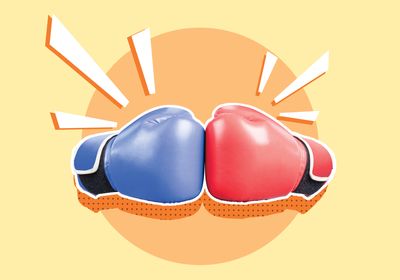ABOVE: Researchers pit microbes against their own to combat diseases. Will a similar strategy work with AI-driven research misconduct? © istock.com, leolintang
Several years ago, I, along with other undergraduate students, embarked upon an important mission: coming up with a catchy phrase to print on our microbiology department hoodie. After a lot of deliberation and having freshly learned about the havoc these tiny creatures wreak on the world, we chose “Invisible and Invincible” as the best representation of the microbial spirit. On finding the prized hoodie recently, I wondered what words I would choose now, having witnessed the evolution of the microbiology field over the years.
There’s no doubt that microbes are powerful: They have taken the goals of survival and reproduction to a level that very few organisms can match. The experience of the time when SARS-CoV-2 virus claimed the air, leaving us gasping for breath, is not something that anyone would soon forget. Similarly, stories about the fungi that make “zombies” out of insects to ensure optimal conditions for their spore dispersal are fodder for nightmares. And let’s not forget superbugs—bacteria that refuse to fall prey to antibiotics—that have caused researchers and clinicians a lot of misery in recent years.
However, while it’s true that microbes and diseases go hand in hand, the situation is not all bleak. Paraphrasing a quote from my favorite sitcom character, the same being can be part of the problem as well as the solution. As microbes fight for survival, they must eliminate other bacteria, viruses, or fungi that serve as a threat or competition. In doing so, they offer scientists a masterclass in strategies to destroy other species. For example, some bacteria produce toxic compounds to get rid of competing species in their surroundings. Others, such as certain Wolbachia strains, restrict other pathogens from infecting their arthropod hosts to monopolize their resources. Over the years, scientists have found ways to leverage these tactics to pit microbes against their own. Not only have they isolated life-saving antibiotics for several decades, but recently, researchers have developed unique strategies to use bacterial strains for vector-borne disease control.
There are also behavioral lessons to be drawn from bacterial communities in a biofilm; when cheaters—bacteria that don’t produce resources but use the ones from the community—arise, altruists evolve a way to eliminate them. I find that to be an interesting parallel to the AI situation that academic scientists face today. On one hand, AI models are advancing science, from enabling scientists to solve the protein-folding problem to helping them identify cell aging markers. On the flip side, scientists fear that AI-based research misconduct, especially in publications, is on the rise. Just like microbial wars in nature, scientists are now turning to AI-based detection tools to fight AI-driven deception.
It will be interesting to see the evolution of machine-learning tools and their impact on science over the next few years. As for microbes, I don’t see them as invincible anymore, but they remain remarkable in my opinion. Perhaps it’s time to update my hoodie to “Invisible and Invaluable.”

